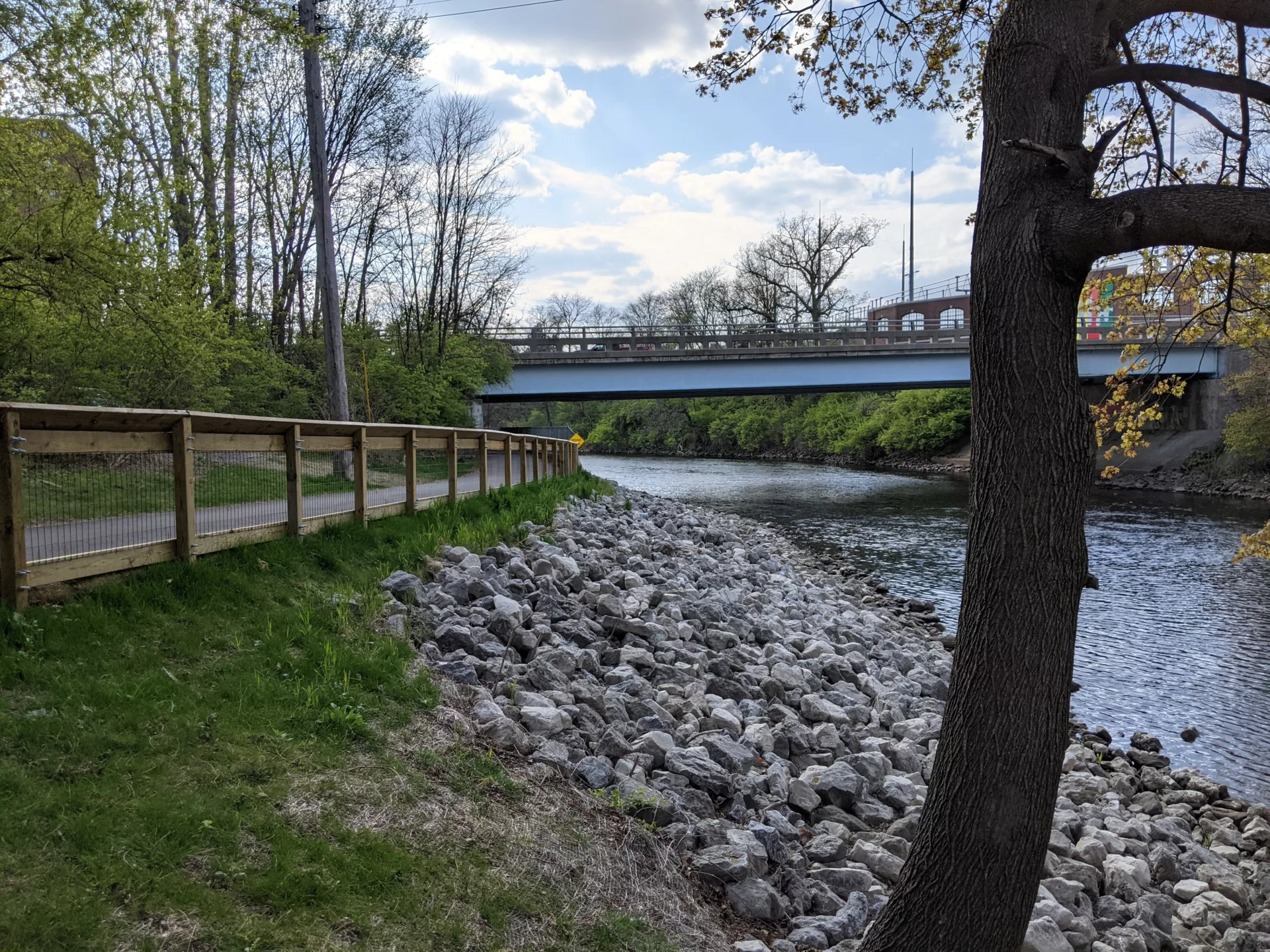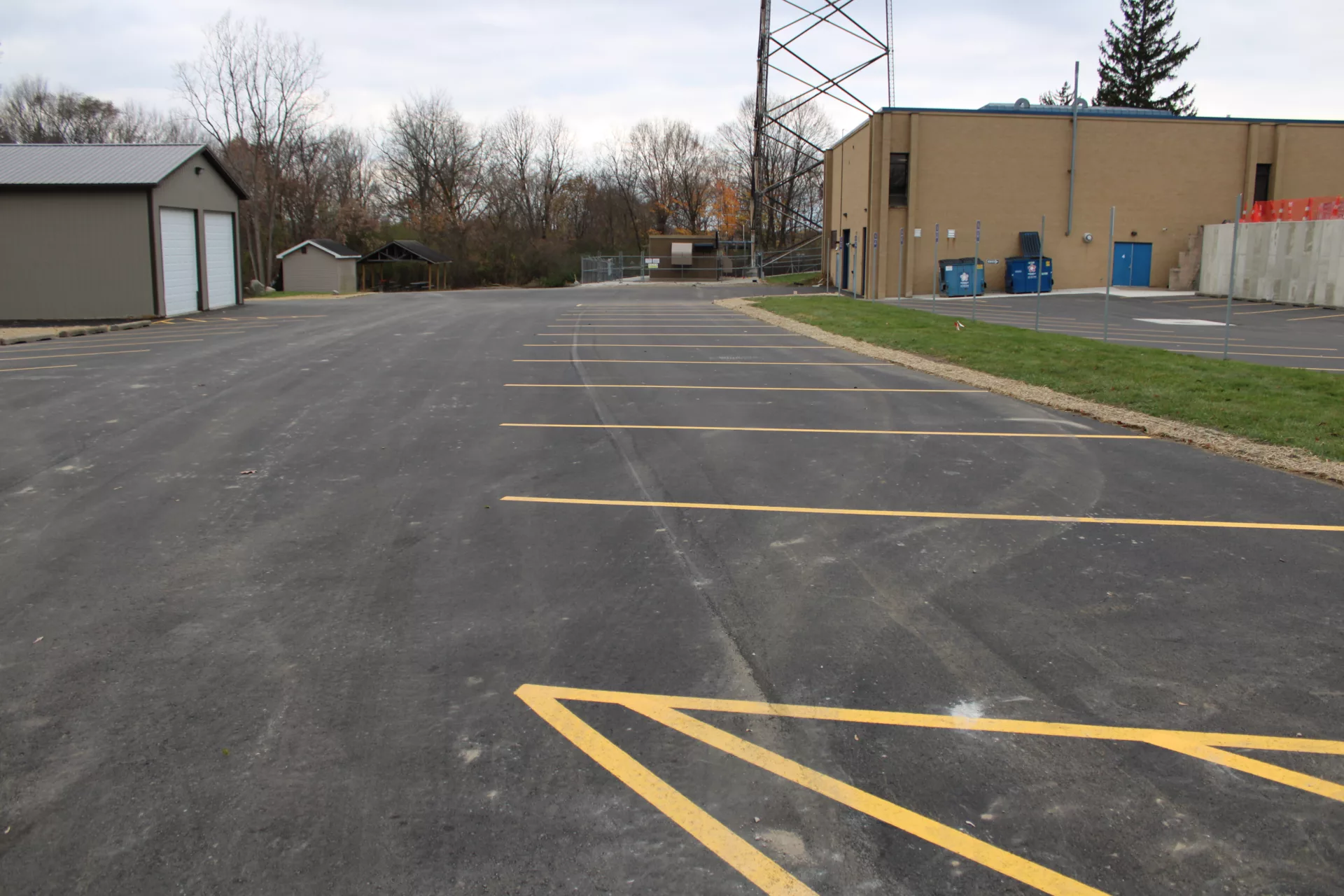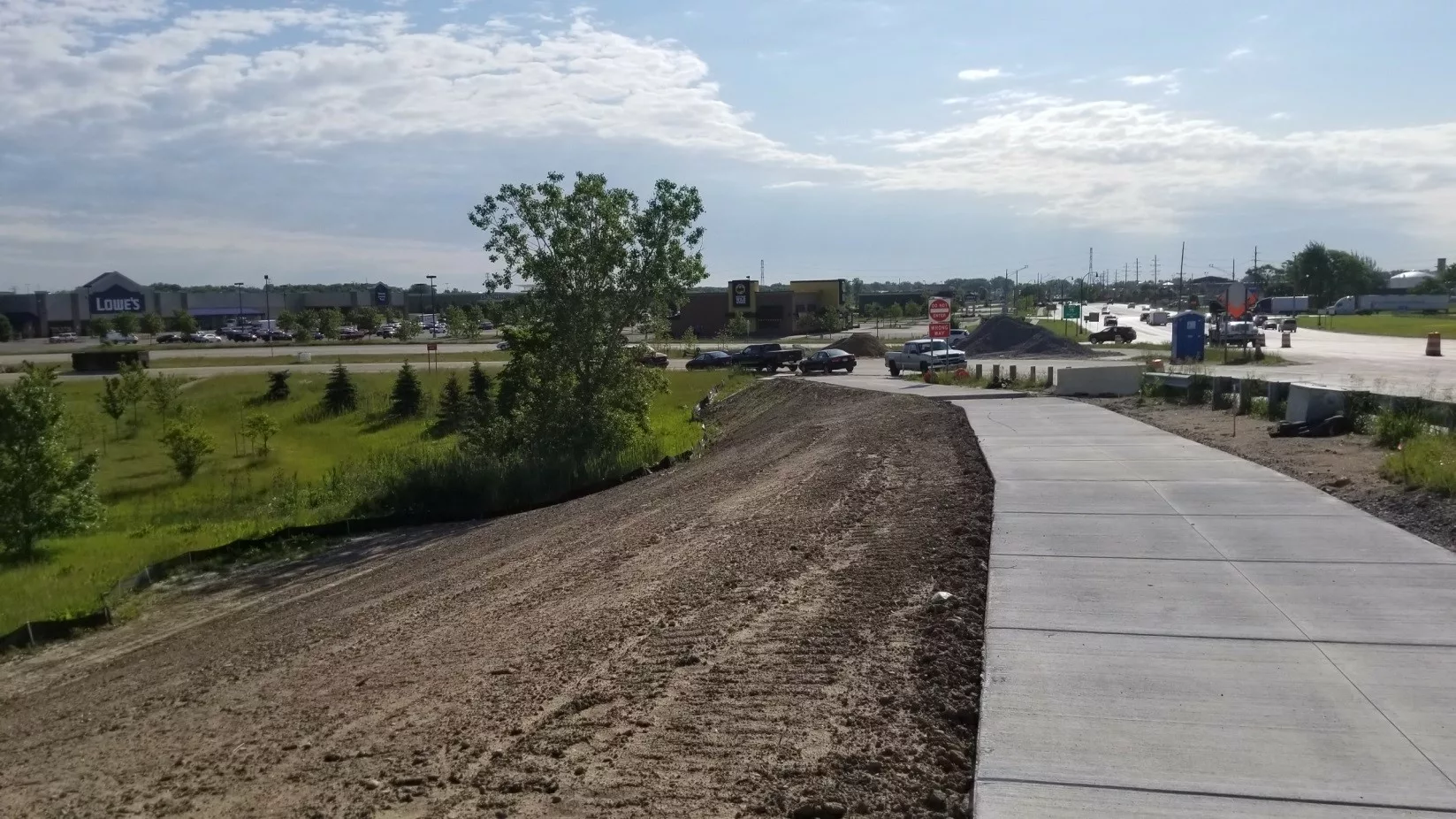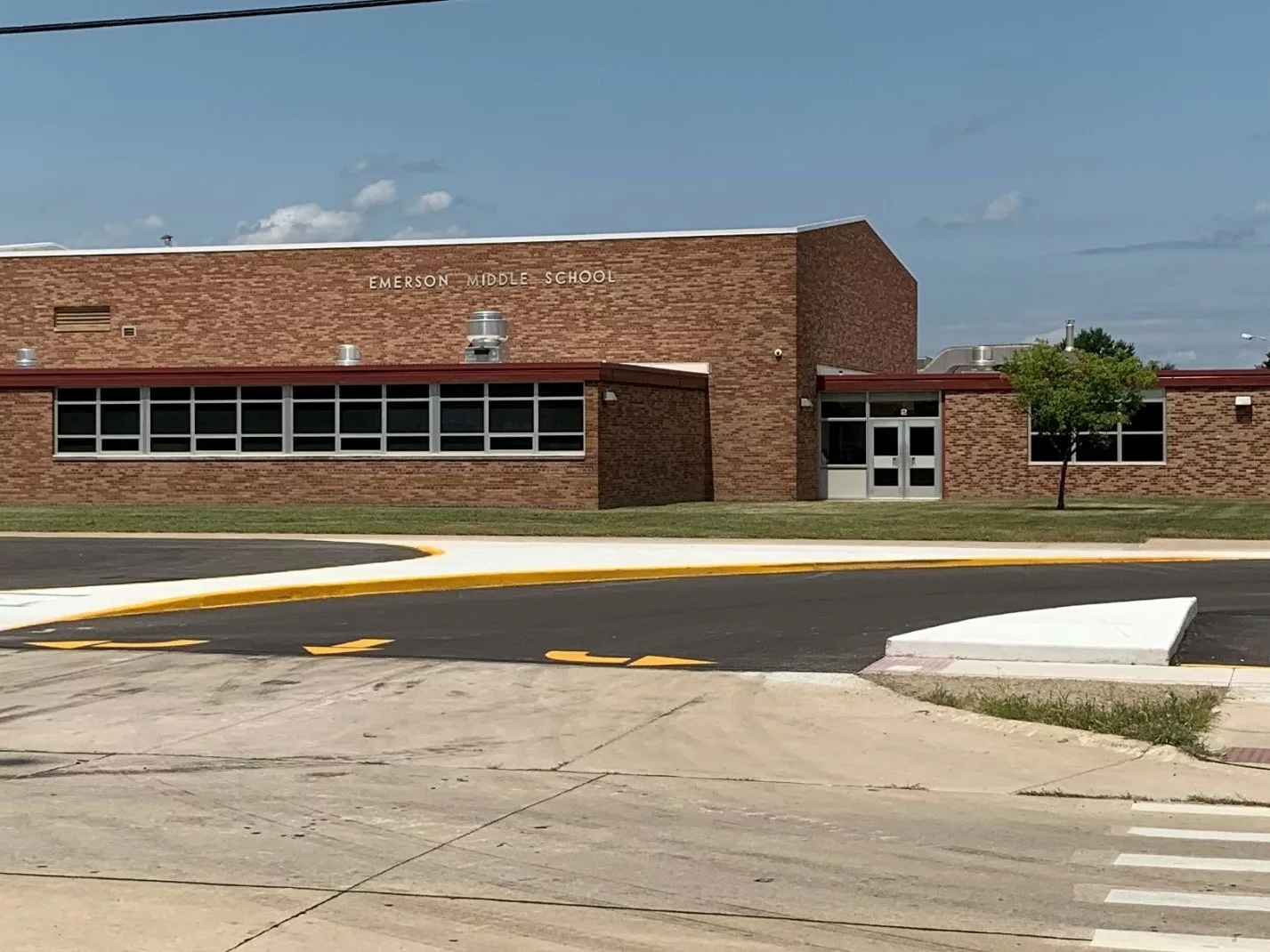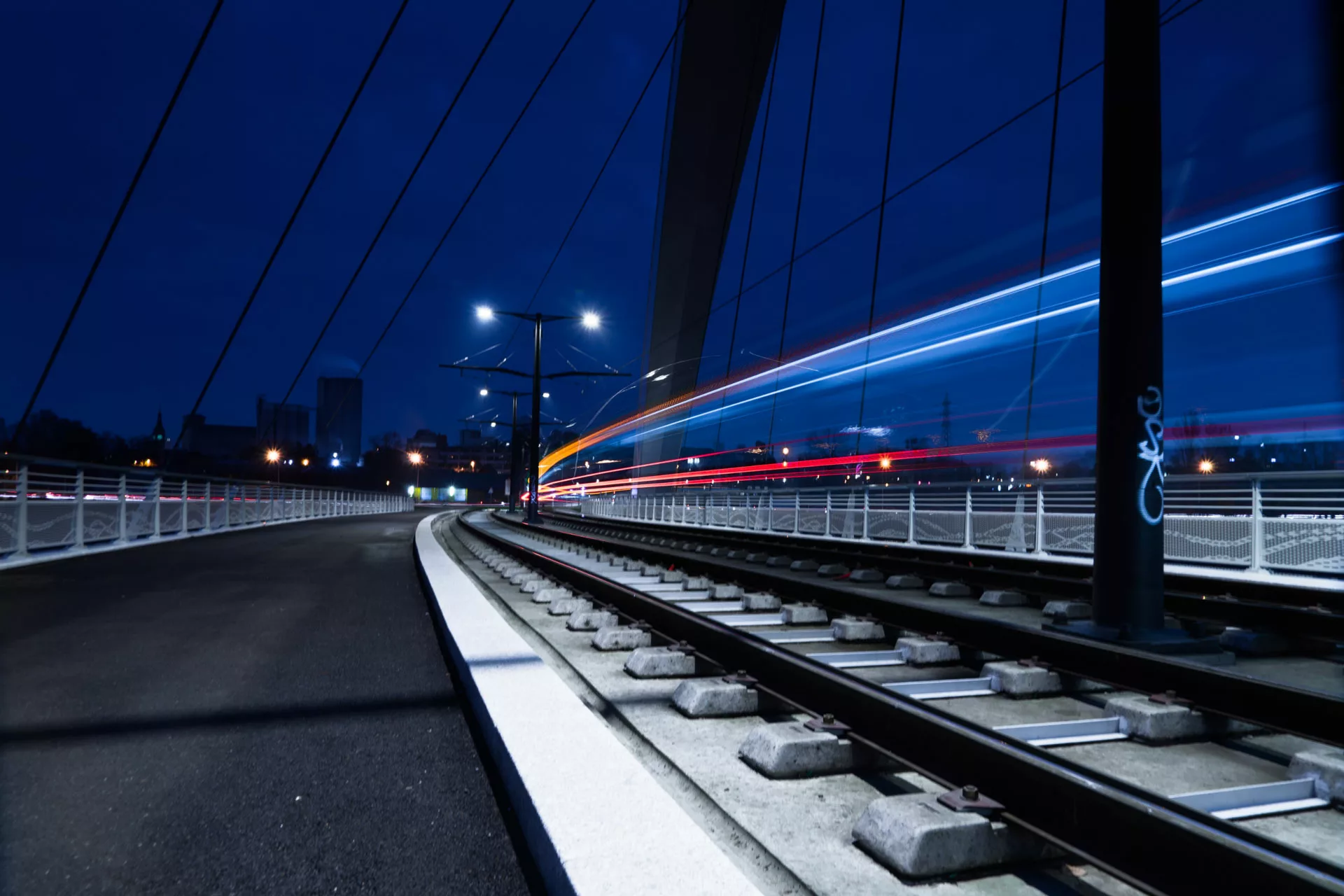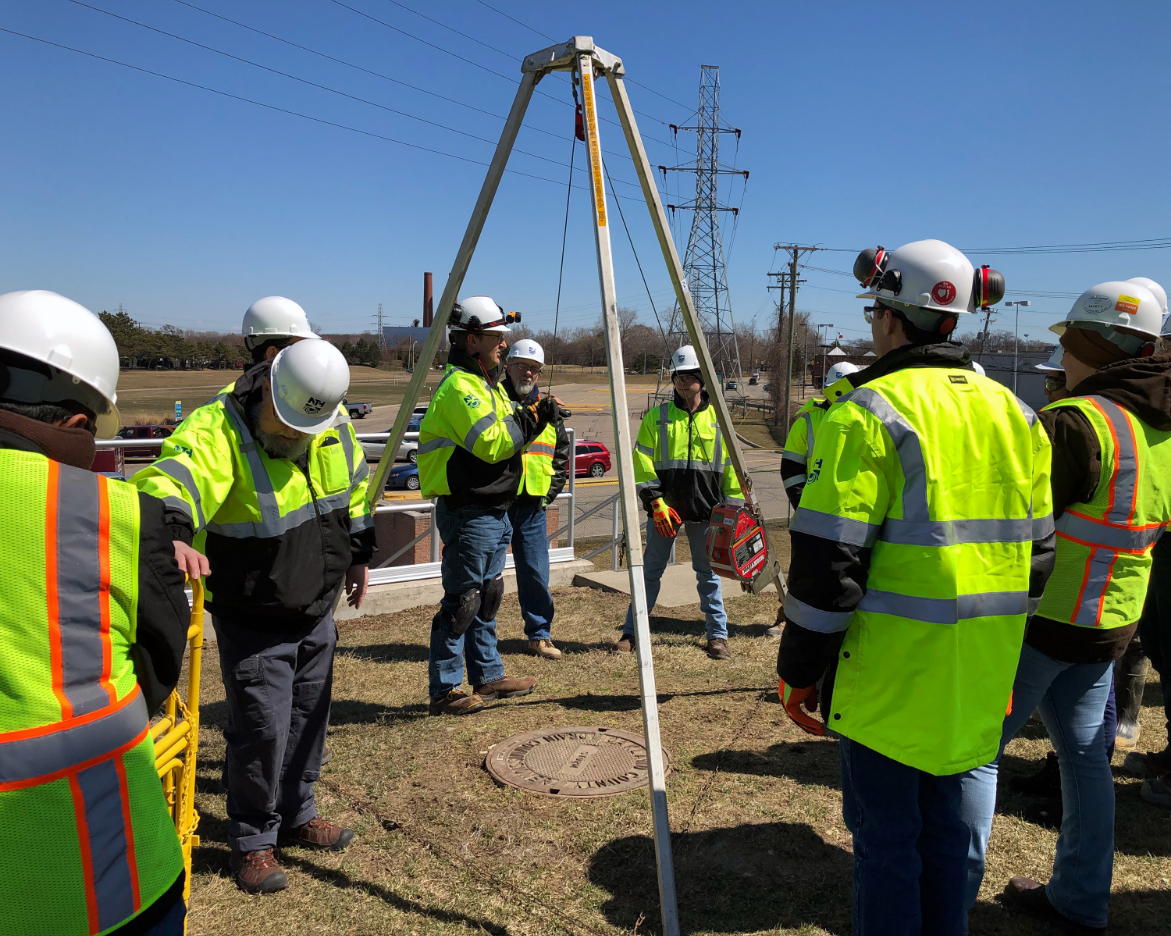Project Overview
The City of Lansing has been continuously adding and improving its Lansing River Trail (LRT) since the first section was constructed in 1975. Currently, LRT contains approximately 13-miles of trail along the city’s various riverfronts for non-motorized use. After the first section of the trail was constructed, major expansions occurred especially during the 1980’s, and frequent extensions have been constructed and are planned for the future. The unique position of the LRT along the banks of the Red Cedar River, Sycamore Creek and the Grand River has meant constant vigilance is needed to address deterioration over time due to slope failures, drainage failures and other necessary maintenance. The City of Lansing has routinely turned to NTH to investigate and remediate these failures. Services provided by NTH include subsurface exploration, forensic investigation of failures, riverbank repair design, trail design and construction testing, inspection, and administration.
Project Scope
The existing River Trail banks are supported by various means including natural embankment sloping with protective vegetation, rip-rap protected slopes, gabion basket walls, sheet pile walls, and numerous boardwalk sections. NTH has explored the subsurface conditions and evaluated the stability of the slopes and retaining systems at numerous locations along the River Trail where concern for safety has arisen. We have developed repair designs and overseen remediation of failures including sheet pile walls, rock filled gabion wall systems and helical pier supported pathways.
Under this contract, we investigated and modeled the conditions at select LRT locations of noted distress or failure and developed unique designs to restore the riverbank to safe operating conditions. Our designs have provided for both “soft and hard” protections to retain these embankments in safe conditions for years to come. Our focus included retaining the natural beauty of the river by incorporating natural materials and features where possible to improve safety. In some locations, we used native flowers, grasses, shrubs and trees to support the stability of the riverbanks and keep the River Trail a splendid piece of nature right in the heart of the City. Various repair options were evaluated based on the geometry of the river bank and pathway, the subsurface conditions, and the desired use of the River Trail.
Client Benefit
By using our years of geotechnical experience in repairing embankment slips/deterioration along with our use of “soft” repairs in conjunction with “hard” repairs (vegetation vs steel sheet piling) we were able to maintain the natural beauty of these sites while providing safe function of the facility to the City and the LRT users.
The natural position of the River Trail is relatively “hidden” yet connects parks, museums, and markets throughout the Capitol City. NTH has developed cost-effective designs that restore serviceability to the River Trail while minimizing impacts to the waterway and retaining / replacing natural vegetation where possible.
